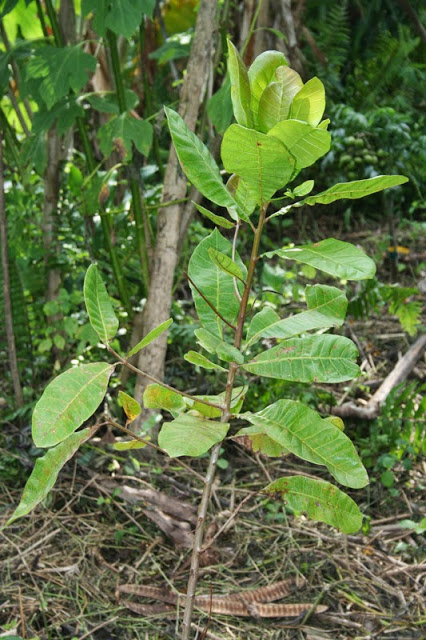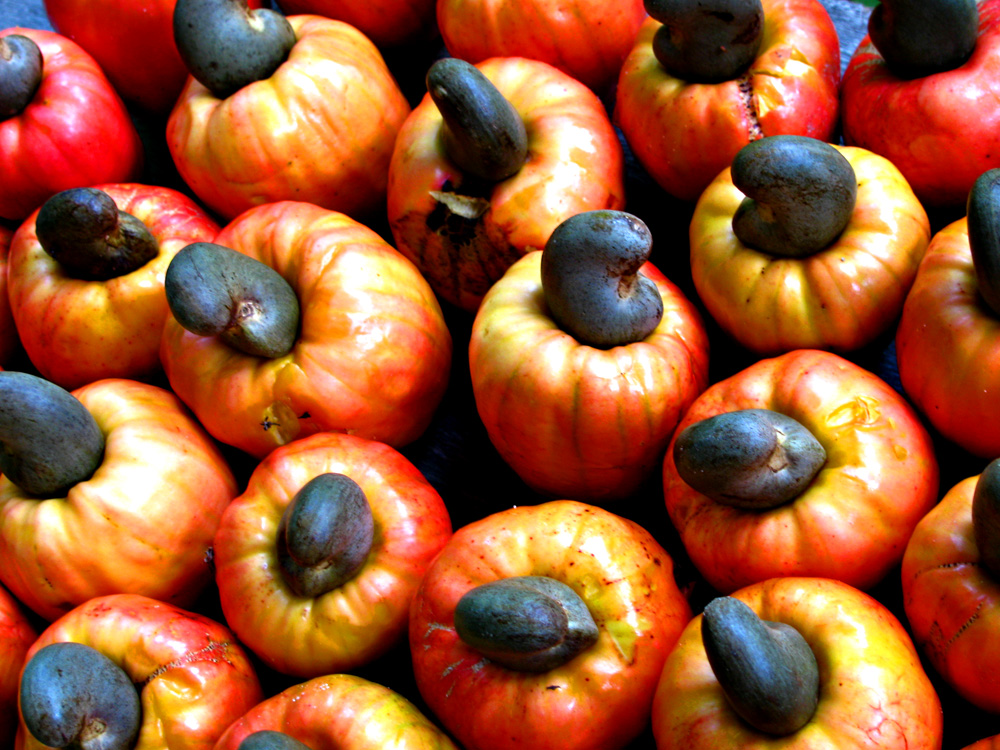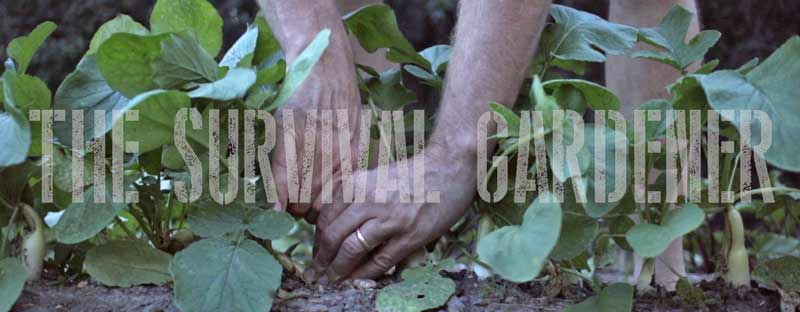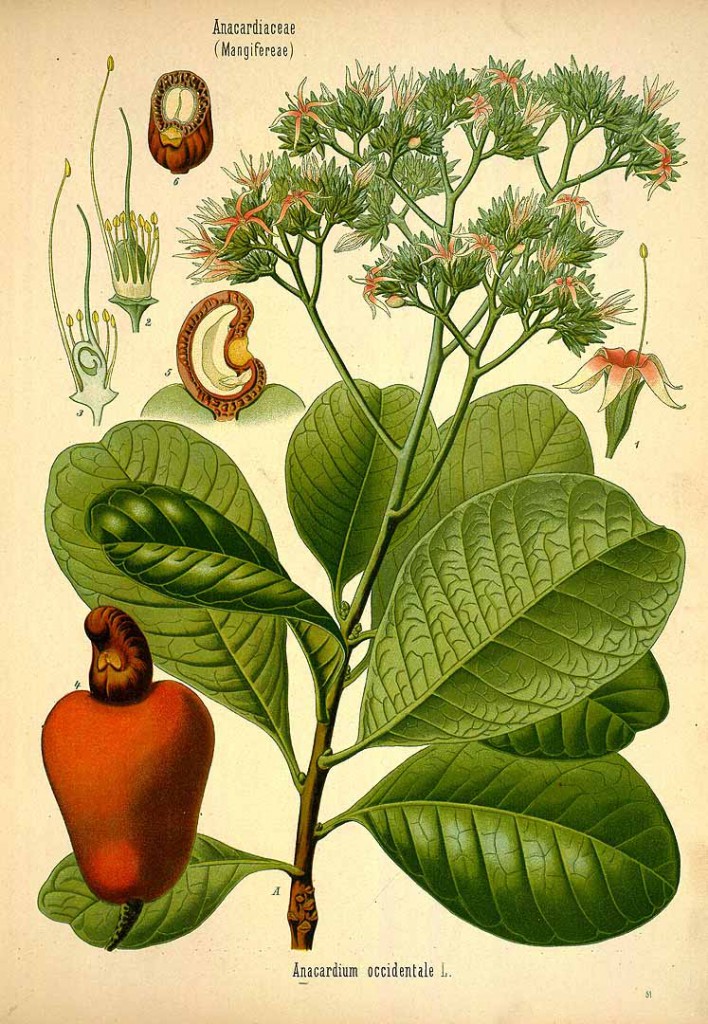For those of you living in the tropical portion of Florida, have you thought about growing cashews?
I have… but I’ve never had quite the big enough greenhouse to pull it off up here, so instead I planted a cashew tree in The Great South Florida Food Forest Project back in May.

I need to get down there to take some follow-up photos and do an update; however, I’m quite enthralled with the idea of growing cashews and I’m going to make it happen wherever we end up next.
Cashews aren’t a real nut, however. They’re a seed that grows at the end of a stem which looks like a fruit. Confused? Here’s an illustration:
It’s really a beautiful tree.
Related to mangoes, sumac, the much-hated Brazilian pepper and even poison ivy, cashews also have a dark side.
Though the fruits are edible, the seed (the cashew “nut” itself) is surrounded by a vicious toxin that will cause blisters and even blindness, making processing it to get the tasty nuts really a major pain – sometimes literally!
A publication from the South African Department of Agriculture says why:
Harvested nuts are dried in the sun for a few days. Properly dried nuts can be stored for 2 years before being shelled. Nuts are roasted to discharge the caustic shell oil and acrid fumes. Hand shelling is impossible if the shell oil has not been removed previously. Kernels must be protected from contamination by the shell oil because it would cause blisters in the mouth and throat when eaten. Before the nuts are roasted they must be soaked in water—the moisture in the shell facilitates the rupturing of the cells containing shell oil and retaining it in the shell. Moisture makes the kernel slightly rubbery and limits breakage of the kernels. The easiest method to wet the shells is to heap the nuts into big piles and to use sprinklers intermittently. Steam may also be used.
The simplest roasting method is to heat the nuts for about a minute in an open pan with holes. Acid fumes are released and if the nuts should catch fire the flames can be doused with water. A more efficient method is to use a slanting perforated cylinder that is rotated above a fire. The shell oil flows through the holes in the cylinder and is collected in a catch through. After the roasting process the nuts are dumped into ash or sawdust to remove the excess shell oil still clinging to the shells.
Yeah, Cashews are scary. The University of Florida actually warns against trying to process your own nuts:
Homeowners should not attempt shelling and consuming the cashew nut produced by cashew trees grown in the home landscape. The shell contains a reddish-brown, viscous, oily liquid composed of various phenolic lipids. This oil is poisonous and acts as a powerful vesicant, causing extensive blistering of the skin (dermatitis). Removal of the kernel from raw nuts requires special precautions and procedures. The sap from the wood, leaves, and flowers may also cause dermatitis and the smoke from burning any part of the tree is poisonous.
What’s life without a bit of sizzled skin? Those killjoys.
Growing Cashews
You can grow cashew trees from seed, though you’re never going to find good seed unless there’s a cashew growing in your neighborhood. The ones from the store are already quite processed, even the “raw” ones, obviously, or else there would be a lot of blistered faces and litigation.
The tree requires a year-round tropical climate and is a smaller size, ranging from 15 – 30′ tall. Perfect for a small lot.
I’m interested in growing cashews for the cashew apple, which is reportedly great for juicing – plus, the tree is just so beautiful and exotic as to make a great addition to a tropical food forest or backyard. Look at these beautiful things!

Photo credit Joao Vicente
Cashews can be grafted or air-layered to duplicate productive trees, since you don’t really know what you’ll get from a seed (though many trees are started this way and still do great!).
If you’d like to see how much work goes into the nuts we wantonly gobble down on car trips, check this video out:
I admit to feeling some shame over my blithe first-world consumption of cashew nuts… I didn’t realize how much of this process was done by hand and how very long it takes to process cashews.
Sometimes you don’t realize how rich you are.
Any of you all ever grow cashews or see a cashew tree in person?


